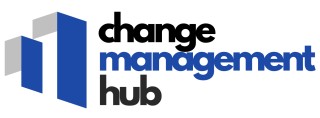
Understanding the Core of an Intelligent Workplace
Decoding the Essence of a Smart Office Environment
As workplaces evolve, the concept of an intelligent workplace emerges as a game-changer in redefining how employees interact, collaborate, and enhance productivity. A truly intelligent workspace leverages advanced technology, not just to make operations seamless but to significantly enrich the employee experience. This transformation is driven by integrating digital tools, data analytics, and artificial intelligence, forming the backbone of a smart workplace.
At the heart of an intelligent office is the adaptive use of workplace technology. From machine learning algorithms that predict patterns and streamline tasks to real-time data that informs decision making, the role of technology is paramount. These innovations are complemented by the strategic use of booking software and desk booking solutions that optimize space use and employee engagement, especially in hybrid work models.
Embracing Digital Workplace Culture
A digital transformation is more than just technology; it's also about aligning the organization's culture with this intelligence. As workplaces become more digital, the way employees interact, whether remotely or in a physical office space, transforms. Digital workplaces cultivate adaptability and innovation, fostering an environment where every employee can benefit from new insights and efficiencies.
The journey to an intelligent workplace involves not only adopting the latest tools but also ensuring that employees are equipped to leverage these technologies effectively. This means creating programs that boost productivity through effective management and ensuring that workplace intelligent strategies are in place.
Understanding these core elements is key to making workplaces not just smarter but also more supportive of the employee's needs and well-being. For further insights into how organizational approaches can be adapted to embrace such transformations, exploring the gift cycle in non-profit organizations reveals how cultural shifts can be managed effectively.
The Role of Technology in Shaping Intelligent Workplaces
The Backbone of Intelligent Workplaces
In the quest to create a truly intelligent workplace, technology emerges as the backbone, enabling smarter, more efficient work environments. The integration of advanced digital tools and solutions transforms traditional offices into dynamic, adaptable spaces that enhance employee experience and productivity.
Leveraging Digital Tools for Enhanced Productivity
Digital tools and software are pivotal in shaping intelligent workplaces. These tools facilitate seamless communication, streamline tasks, and support hybrid work models, allowing employees to collaborate effectively, regardless of their location. From desk booking software to real-time data analytics, these technologies are designed to optimize the work environment and boost productivity.
Artificial Intelligence and Machine Learning
Artificial intelligence (AI) and machine learning are at the forefront of workplace technology, providing intelligent solutions for complex problems. AI-driven tools can analyze vast amounts of data to support decision making, automate routine tasks, and enhance management processes. This not only improves efficiency but also allows employees to focus on more strategic, high-value work.
Smart Workplaces: A New Era of Employee Engagement
As workplaces become more intelligent, employee engagement takes center stage. Smart workplace technologies foster a more connected and engaged workforce by offering personalized experiences and flexible work options. Hybrid work solutions, for instance, allow employees to balance in-office and remote work, improving satisfaction and productivity.
Integrating Technology with Organizational Culture
The successful integration of technology into the workplace requires a cultural shift. Organizations must align their culture with technological advancements to fully realize the benefits of an intelligent workspace. This involves embracing change, fostering a culture of innovation, and ensuring that employees are equipped with the skills needed to thrive in a digital workplace.
For a deeper understanding of how technology and culture intersect in the workplace, explore the essentials of process safety management certification.
Change Management: Navigating the Transition to an Intelligent Workplace
Adapting to the New Work Environment
Transitioning to an intelligent workplace requires strategic change management to ensure a smooth and effective adaptation. The integration of cutting-edge technology is essential, yet it's equally vital to cultivate a conducive work environment that aligns with these advancements. This junction often presents challenges that necessitate tailored solutions for each organization.Leveraging Digital Tools for Employee Engagement
Central to this transition is the role of digital tools. Implementing software that facilitates seamless communication and streamlines tasks can significantly enhance employee experience. For instance, desk booking systems in hybrid work setups contribute to flexibility and optimize workspace usage. Investing in smart workplace technology not only increases productivity but also fosters a sense of involvement among employees by enhancing their engagement through real-time data and analytics.Ensuring a Smooth Transition
Effective change management is pivotal in navigating these transitions. Organizations must develop change strategies that encompass training programs and transparent communication to encourage employee buy-in. By focusing on incremental changes and leveraging machine learning, businesses can better address resistance and adapt their processes. For more insights on effectively managing these transitions, explore harnessing the power of nonprofit analytics for effective change management to uncover strategic approaches.Realigning Organizational Structure
As workplaces become intelligent, the structural dynamics within the organization often need reevaluation. Decision making should be data-driven, utilizing data analytics to support strategic decisions across various management levels. Moreover, workplace intelligence through artificial intelligence can play a significant role in optimizing operations, especially in a digital workplace. These redefinitions of workplace environments ensure that the organization adapts not just on a technological front but aligns its cultural and structural components accordingly to thrive in the new age of work.Cultural Shifts: Aligning Organizational Culture with Intelligence
Aligning Culture with Technological Advancements
In the quest to create an intelligent workplace, it is paramount for organizations to align their culture with the rapidly evolving technology landscape. The integration of workplace technology transforms the office into a smart workplace, facilitating not just efficient data management and real-time analytics, but also a more engaged and agile workforce.
The shift towards a digital workplace is evident, with tools such as booking software and desk booking systems playing a pivotal role in optimizing hybrid work environments. By embracing these digital solutions, organizations can foster an environment where employee experience and productivity thrive.
Fostering Change through Employee Engagement
As workplaces become increasingly intelligent, organizations must prioritize employee engagement to ensure a seamless transition. Employees need to feel valued and involved in the change process, and management can achieve this by leveraging communication platforms, thus maintaining an open dialogue.
To boost engagement, companies should offer training on new workplace intelligent tools. This helps in reducing resistance to change, enhancing employee experience, and enabling employees to perform tasks effectively in a smart workspace.
Balancing Traditional Practices with Modern Solutions
While the advancement of an intelligent workspace is a thrilling prospect, it’s essential to maintain a balance between traditional business practices and emerging intelligent solutions. For instance, implementing artificial intelligence and machine learning for data analytics should complement existing work processes rather than replace them entirely.
By incorporating hybrid strategies that harmonize both conventional and digital workplace practices, organizations can enhance decision making and drive positive cultural shifts without overwhelming their employees.
Measuring Success in an Intelligent Workplace
Assessing the Impact of an Intelligent Workplace
As organizations embrace a smarter, digitally-driven work environment, evaluating the outcomes becomes crucial. The integration of sophisticated workplace technology and tools, alongside innovative solutions like booking software and machine learning, offers businesses the opportunity to enhance productivity and streamline operations. But how do we measure the success of intelligent workplaces?
Key Performance Indicators for Success
- Employee Productivity: Assess whether digital tools and data analytics optimize tasks and boost efficiency. Quantitative methods, such as tracking employee output and task completion rates, provide valuable insights.
- Employee Engagement: Measure the impact of artificial intelligence and digital workspace tools on employee experience. Surveys and feedback sessions help gauge employee satisfaction and adaptability to the smart workspace.
- Decision Making: Leverage intelligence and real-time data to drive informed management decisions. The effectiveness of these data-driven strategies is a direct indicator of workplace intelligence success.
- Adaptability to Hybrid Work: Evaluate how well the organization supports hybrid work models. Desk booking systems and remote collaboration tools should seamlessly accommodate both on-site and remote employees.
- Technological Adoption: Monitor the adoption rate of new office technologies. Higher software and tool usage metrics reflect successful change management and cultural alignment with intelligent work practices.
- Cost Efficiency: Analyze the financial gains achieved through automation and intelligent solutions. This can include reduced overhead costs and minimized resource wastage facilitated by intelligent management.
The Continuous Journey of Improvement
Intelligent workplaces require ongoing evaluation and improvement. Regularly revisiting performance metrics ensures alignment with organizational goals and highlights areas needing adjustment. An effective change management strategy is essential for steering cultural shifts and technological advancements, paving the way for sustained success in the evolving landscape of digital work environments.
Future Trends: The Evolution of Intelligent Workplaces
Emerging Technologies and Their Impact
The future of intelligent workplaces is intricately linked with the evolution of technology. As we continue to integrate advanced technologies, workplaces are becoming more adaptable and efficient. Technologies like artificial intelligence and machine learning are not just buzzwords; they are transforming how tasks are managed and decisions are made. With real-time data analytics, businesses can gain insights into employee productivity and engagement, leading to more informed decision-making processes.
The Rise of Hybrid Work Models
Hybrid work models are increasingly becoming the norm, blending remote and in-office work environments. This shift demands intelligent workspace solutions that cater to both physical and digital needs. Desk booking and booking software are becoming essential tools in managing space efficiently, ensuring that employees have access to the resources they need, regardless of their location. This approach not only optimizes space but also enhances the overall employee experience.
Enhancing Employee Experience Through Digital Tools
Digital tools are at the forefront of creating a smart workplace. These tools streamline tasks, improve communication, and foster collaboration among employees. As digital workplaces evolve, the focus is on enhancing employee engagement and satisfaction. By providing employees with the right tools, organizations can boost productivity and foster a more dynamic work environment.
Data-Driven Decision Making
In intelligent workplaces, data is a critical asset. Leveraging data analytics enables organizations to make informed decisions that align with their strategic goals. By analyzing patterns and trends, businesses can anticipate challenges and opportunities, ensuring that they remain competitive in an ever-changing market. This data-driven approach is integral to effective management and planning.
Preparing for Future Challenges
As workplaces continue to evolve, organizations must be prepared to navigate future challenges. This involves staying ahead of technological advancements and adapting to cultural shifts within the organization. By fostering a culture of continuous learning and adaptability, businesses can ensure that they remain at the forefront of innovation. The intelligent workplace is not just a concept; it is a dynamic environment that requires ongoing commitment and strategic planning.













